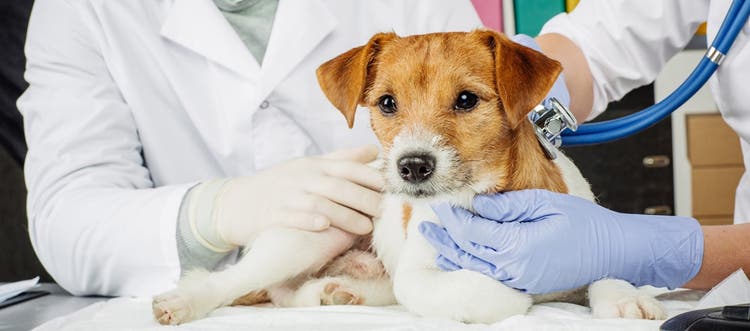Hip dysplasia affects dogs of all ages.
Most pet owners worry when their dog’s behavior or routines change. It can be scary when your dog goes from active and energetic to hesitant about going up the stairs or jumping off the bed. Just like in humans, decreased mobility will occur naturally as your dog gets older, but various conditions can also cause your dog to have difficulty getting up and moving around. One of the more common causes of dog hip discomfort is the skeletal condition known as hip dysplasia — and it doesn’t just affect older dogs.
What Is Hip Dysplasia?
Canine hip dysplasia is a common skeletal condition that can affect dogs of all sizes and ages. Normally, the ball and socket of a dog’s hip joint are very tight. However, when the ball and socket of the rear hip joint don’t develop correctly or get out of alignment, this causes looseness, or “laxity,” in the joint. This looseness causes the joint to repeatedly dislocate and damage the cartilage in the joint, and can also trigger arthritis or bone spurs.
Hip dysplasia can be found in puppies as young as a few months old, or symptoms can develop over time as your dog gets older.
What Causes Hip Dysplasia?
Though hip dysplasia is perceived to occur more in large dogs, this condition can happen to any dog, even small breeds. Hip dysplasia can be caused by a number of factors, including:
- Genetic predisposition
- A previous injury
- Being overweight
- Hormone imbalances
- Diet
Once the condition is established, other factors such as obesity can make it worse.
What Are the Symptoms of Hip Dysplasia?
Usually, the symptoms of dog hip dysplasia are barely noticeable at first, but worsen over time as your dog ages. The most telling signs of the condition are related to mobility. Keep an eye out for:
- Decreased activity; your dog no longer wants to run around like they used to
- Difficulty jumping on or off the couch, getting into the car, etc.
- Lameness or looseness in their rear end or rear legs
- Grinding sounds in the joint when your dog moves
- Stiffness when getting up and/or walking around
As the condition progresses, you may notice a loss of muscle mass in the affected thigh(s) and more muscle in their shoulders as their front legs work harder to compensate.
How Is Hip Dysplasia Diagnosed and Treated?
To diagnose the condition, your vet will first examine the hip physically and observe your dog’s gait. Additionally, your vet may recommend taking X-rays to examine the joint or performing a hip-scoring test to determine the degree of hip dysplasia.
Once your dog is diagnosed, treatment varies depending on the severity of the issue and your dog’s age. Pet owners can try to keep their dog comfortable with the following; however, keep in mind that these suggestions are no substitute for full veterinary treatment:
- Nonsteroidal anti-inflammatory drugs (NSAIDs) specifically for dogs
- Keeping the dog’s weight at a healthy level
- Controlled exercise to keep your dog active without overdoing it
Other therapies like swimming, laser therapy and acupuncture may also help ease hip discomfort in dogs.
In more extreme situations, pet owners may consider surgery to modify or completely replace the hip joint.
The good news is that even with canine hip dysplasia, your dog can still live a healthy, happy life. Pet owners can help their dogs stay comfortable long-term by proactively seeking appropriate therapies and knowing the do’s and don’ts of exercise and weight management.







